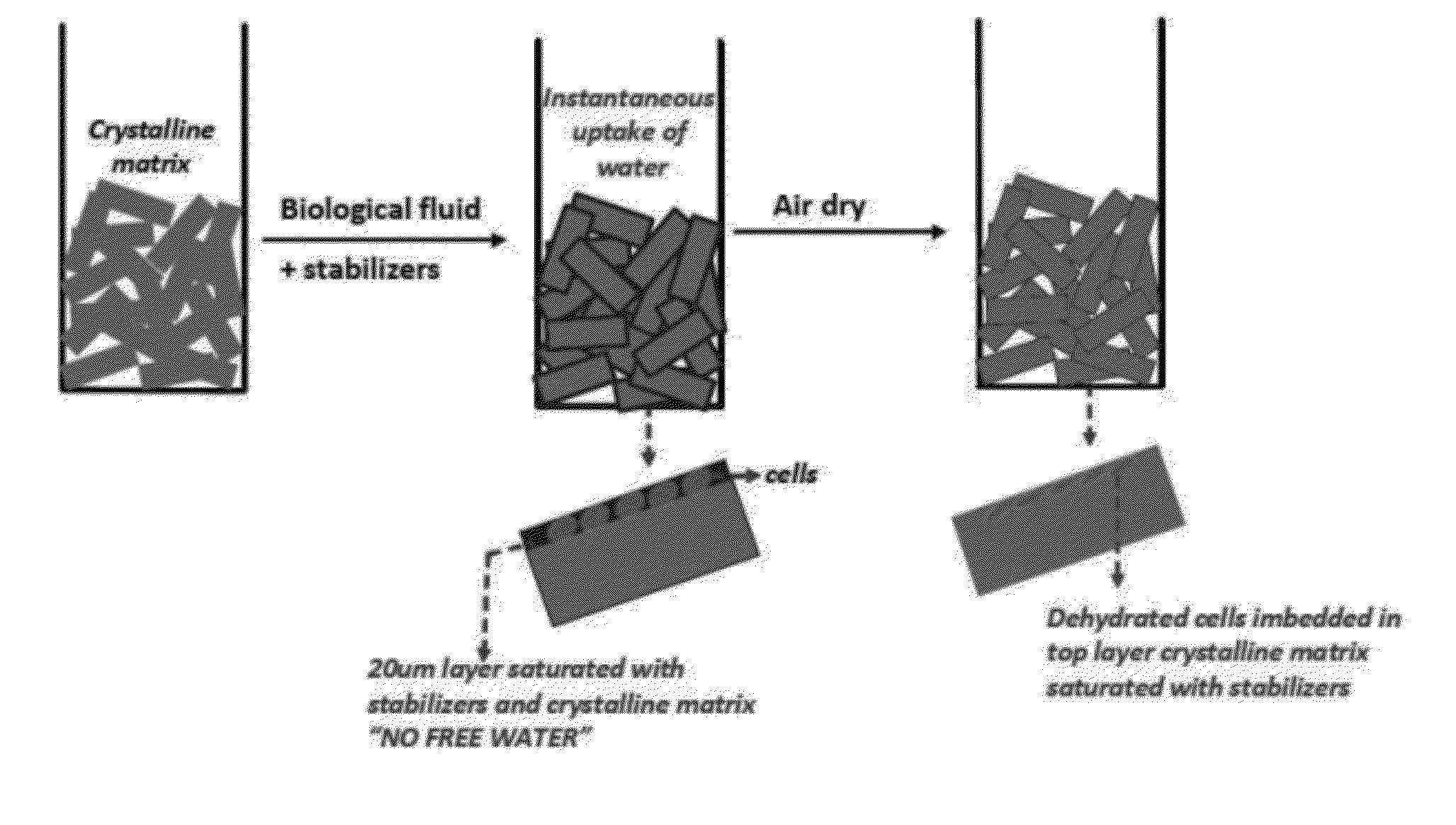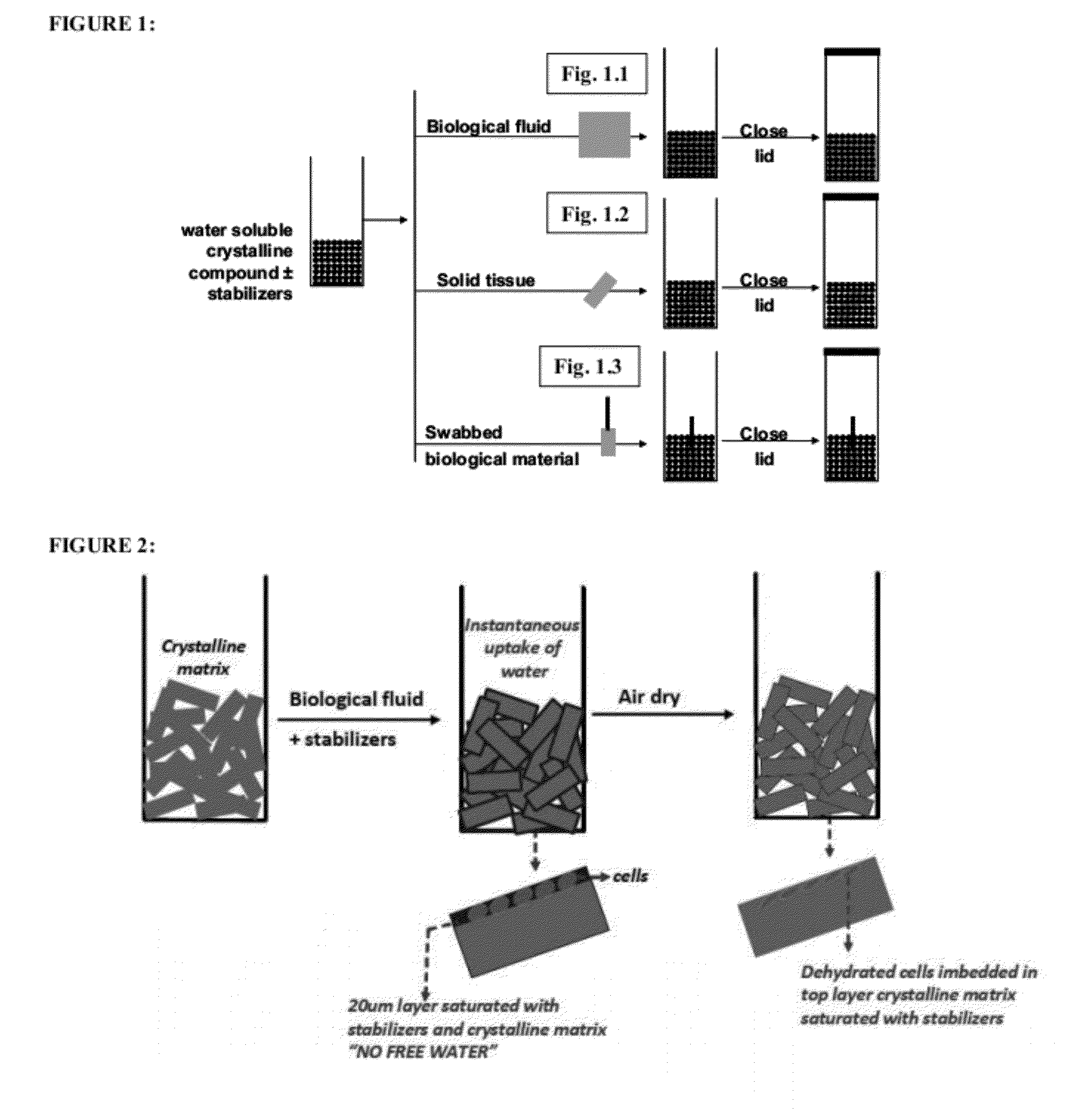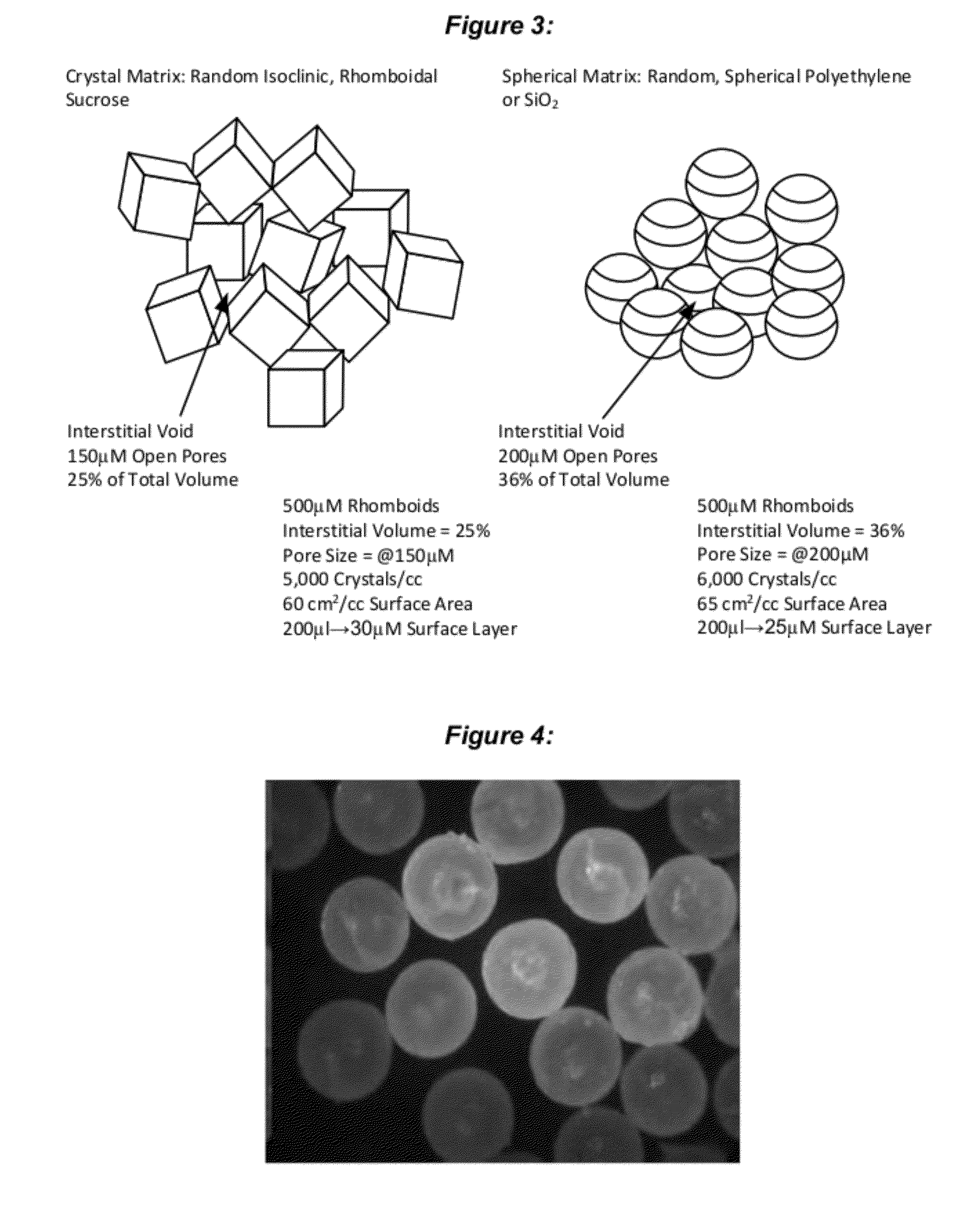Stabilized chemical dehydration of biological material
a biological material and chemical dehydration technology, applied in the field of stabilizing biological samples, can solve the problems of inability to collect biological materials, high equipment costs, and complex biological materials, and achieve the effect of reducing the water activity level of biological samples
- Summary
- Abstract
- Description
- Claims
- Application Information
AI Technical Summary
Benefits of technology
Problems solved by technology
Method used
Image
Examples
example 1
[0095]This Example, in FIG. 5, shows results from recovery of saliva samples applied to excess sucrose and air dried overnight at ambient temperature, in accordance with an embodiment of the invention. Following rehydration in water, cells are spun down for subsequent DNA recovery using a standard Qiagen protocol. The resulting DNA is run on an agarose gel and stained with ethidium bromide for visualization. Buccal samples collected using cotton swabs (B) or polyester swabs (C) are allowed to, air dry after collection (1), dipped in sucrose solution (2), or in sucrose crystals (3). DNA is recovered using standard qiagen protocol and run on an agarose gel.
example 2
[0096]This Example, in FIG. 6, shows recovery results from whole blood storage on an assembly of Sucrose using the following protocol: 200 ul each of 4 different blood lots were applied to 1.2 g of sucrose matrix. Some samples were immediately sealed (indicated by a “W”) or air-dried for 48 hours at room temperature (indicated by a “D”) prior to sealing. Samples were stored in the crystalline sucrose assembly at the indicated temp for 30 days before recovery via rehydration, then DNA purification via Qiagen Mini-column technology. The resulting DNA was then analyzed by agarose electrophoresis, under conditions where DNA>40 Kb will appear as a single collapsed band. A Reference blood sample was frozen at −20 c and similarly purified.
example 3
[0097]This example, in FIG. 7, shows results from buffy coat storage on the assembly of Sucrose, using the following protocol: Blood from different healthy donors was fractionated by centrifugation to yield an enriched buffy coat fraction, 30 uL of which was then applied to 0.2 g of sucrose matrix amended with a number of formulations. Fl (H2O), F2 (Lysine), F3 (Lysine, KCl, potassium sorbate, pyruvate, ATA), F4 (Lysine, KCl, potassium sorbate, pyruvate, ATA, twice the concentration of F3), F5 (Lysine, potassium sorbate, pyruvate, ATA), F6 (Lysine, potassium sorbate, pyruvate, ATA—twice the concentration of F5), and F7 (Lysine, potassium sorbate, pyruvate, ATA, histidine). Samples were air-dried and then stored at room temperature (RT), 56 C or 76 C for up to 6 days. This served to screen alternative Crystal Matrix surface enhancements. DNA was recovered by solubilizing the buffy coat sugar complex in PBS followed by Qiagen mini-column technology.
PUM
| Property | Measurement | Unit |
|---|---|---|
| Angle | aaaaa | aaaaa |
| Contact angle | aaaaa | aaaaa |
| Volume | aaaaa | aaaaa |
Abstract
Description
Claims
Application Information
 Login to View More
Login to View More - R&D
- Intellectual Property
- Life Sciences
- Materials
- Tech Scout
- Unparalleled Data Quality
- Higher Quality Content
- 60% Fewer Hallucinations
Browse by: Latest US Patents, China's latest patents, Technical Efficacy Thesaurus, Application Domain, Technology Topic, Popular Technical Reports.
© 2025 PatSnap. All rights reserved.Legal|Privacy policy|Modern Slavery Act Transparency Statement|Sitemap|About US| Contact US: help@patsnap.com



